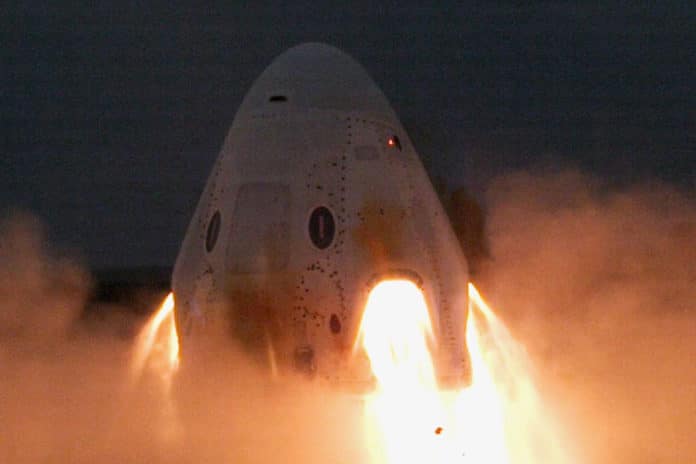The US space company SpaceX has tested the emergency engines of its transport capsule, Crew Dragon. The engines are part of the rescue system, which aims to move the capsule away from the rocket in an emergency.
A round of Crew Dragon tests was successfully completed that took place on Wednesday near SpaceX’s Landing Zone 1 on Cape Canaveral Air Force Station in Florida. With that, SpaceX had taken another key step in its schedule, especially since there was an explosion when the company performed the same test in April. After investigation, SpaceX and NASA identified the cause of the fire, and several changes were made to the Crew Dragon, such as replacing valves with rupture discs.
The engine tests began with two burns for a duration of one-second each for two of Crew Dragon’s 16 Draco thrusters. Those thrusters are used for on-orbit maneuvering and attitude control, and would also be used for re-orientation of the spacecraft. The team then completed a full-duration firing for approximately nine seconds of Crew Dragon’s eight SuperDraco engines, which will accelerate Dragon away from the F9 launch vehicle in the event of an emergency after liftoff.
With the success of the test, the company proves that the April failure was indeed resolved. However, through Twitter, SpaceX has stated that data analysis for this new test is still ongoing. Assuming the results come out as planned, SpaceX will proceed with further testing towards Crew Dragon certification so that it is finally released to initiate human spaceflight aboard.
In the next test, Crew Dragon will simulate an abortion escaping from a Falcon 9 rocket during the period of maximum aerodynamic pressures on the launch vehicle. If successful, the test will validate Crew Dragon’s ability to abort a flight in the most challenging circumstances.
Under NASA’s Commercial Crew Program, SpaceX, along with Boeing, are developing vehicles to transport American astronauts to and from the International Space Station.
